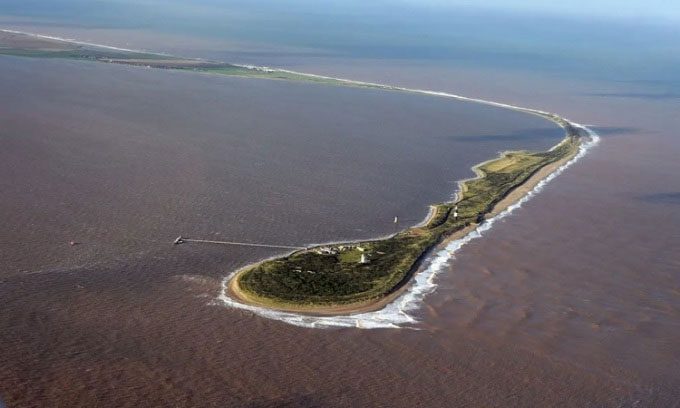Researchers hope that a high-resolution acoustic wave system can help locate the submerged town of Ravenser Odd, which sank beneath the North Sea in the mid-14th century.
Ravenser Odd was once a prosperous port town built on a sandbank at the mouth of the Humber River before it was abandoned, destroyed, and submerged during a major storm in 1362. During a family holiday in Withernsea, Daniel Parsons, a sedimentologist at the University of Hull, learned about Ravenser Odd, one of many locations in the Holderness coastal region that have been lost for decades due to coastal erosion.

Ravenser Odd is believed to be located near Spurn Point at the mouth of the Humber River. (Photo: Alamy)
Parsons began to delve deeper into the history of Ravenser Odd and planned a search for the town. As a geoscientist specializing in the use of high-resolution acoustic wave systems to better understand sediment movement, he started considering the use of this equipment to detect traces of Ravenser Odd.
A research project surveying the area offshore of Spurn Point, covering approximately 10 hectares in 2021, did not locate the site of Ravenser Odd, but Parsons believes they came very close. A second survey is scheduled to take place in the next 2 to 3 weeks. After locating the town, researchers hope to secure funding for archaeological exploration.
Ravenser Odd was established around 1235, and the town’s name originates from hrafn’s eyr, meaning “raven’s island” in Old Norse. The town once held national significance with its piers, warehouses, a court, and a prison, along with a breakwater and harbor. Coastal erosion led to the town’s decline. In 1362, northern Europe experienced a severe storm known as Grote Mandrenke, or Saint Marcellus’ Flood, resulting in the town being completely submerged beneath the cold waters of the North Sea.
Parsons believes that the story of Ravenser Odd can help people visualize the dangers of climate crisis and coastal erosion. Specifically, Holderness is one of the fastest-eroding coastal areas in the world, with some regions shrinking by 10 meters each year.





















































